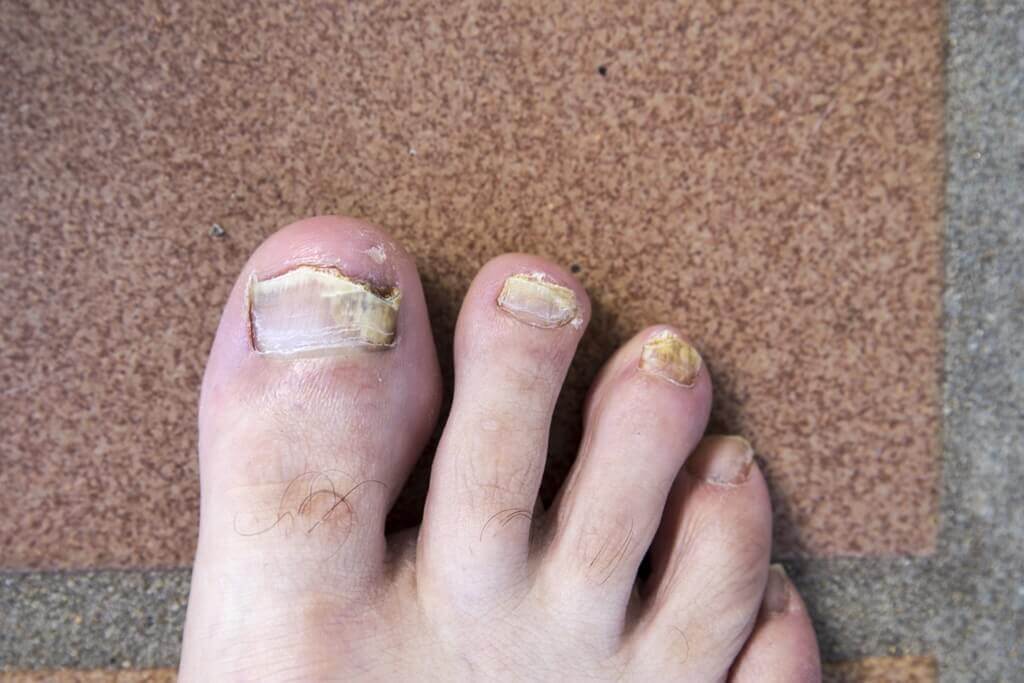
All About Athlete’s Foot
How do I get rid of Athlete’s Foot?
This is a question we get asked a lot! Some of the most common conditions we see in clinic are athlete’s foot and fungal nail infections. Both are caused by an overgrowth of fungus, and tend to occur together.
Anyone can get athlete’s foot, or Tinea Pedis, to give it it’s proper name. It isn’t just kids with sweaty feet or sporty people! It doesn’t always just show up as itching between the toes either. Did you know, if you have chronic dry skin that hasn’t improved with regular moisturising, it could be fungal?
How do I treat it?
Well, firstly, it’s important to get the correct diagnosis. There are other skin conditions that can appear similar to athlete’s foot, such as eczema, dermatitis, or psoriasis. Bruising, pressure and psoriasis can also mimic fungal nail infections too. A Podiatrist can take a full history and rule out any other conditions that may be causing your symptoms. At Round House Podiatry, we stock a simple test that will check for fungal infection in 5 minutes.
Then, you need the right treatment. A terbinafine based anti fungal cream, such as Lamisil, works well. This needs to be applied daily, for about 4 weeks. Your skin cells are constantly being replaced with new ones, and this process takes 4 weeks. It’s important to keep treating the skin until this process is complete, to prevent any fungal spores remaining in the skin reinfecting. Dry your feet well after bathing, you can even use a hairdryer on a low heat setting to help dry the skin between your toes. Always put your socks on first to stop the fungal infection spreading to other parts of the body as your feet go through trouser legs etc.
Is there anything else I can do
Using the best soap for an athlete's foot can help maintain a clean and fungal-free environment. Opt for an antifungal soap that can kill spores and reduce fungal buildup.
You will need to wash your socks, tights, towels etc either on a hot wash of 60 degrees, or by adding a laundry disinfectant such as Dettol Laundry Disinfectant, to your wash. This will help to kill off any fungal spores that have transferred from your feet. These spores can reinfect the skin.
These spores can reinfect the skin.
Unfortunately, shoes are also a breeding ground for fungal spores. Fungus loves warm, dark, damp conditions, just like those in a shoe! Rotate your shoes to wear them alternate days, which allows the moisture that has absorbed into them from your feet to evaporate. Use an antifungal spray in your shoes, like Lamisil spray, or Daktarin powder. Wearing socks made of natural fibres such as bamboo, wool and cotton helps too.
For fungal nails, it can be more tricky to treat. If you have a severe infection, then terbinafine tablets prescribed by your GP may be the best option. Otherwise, radical reduction of the nail is needed, and application of an antifungal nail lacquer until the new nail growth is totally clear. As with athlete’s foot, a definitive diagnosis is important.
So, if you are struggling with nasty nails, itchy feet, or endlessly dry skin, see a podiatrist for advice!
If you'd like our help with your Athlete's foot or nail infection, you can book online
You can find out more about fungal skin infections on the NHS website here
Frequently Asked Questions (FAQs)
Yes, a podiatrist treats athlete's foot. Podiatrists are specialists in foot and ankle health and can provide effective treatments for athlete's foot, including prescription medications and advice on preventing recurrence.
Most common symptoms of athlete's foot are
1. Itching and Burning: Particularly between the toes.
2. Redness: Affected areas become red and inflamed.
3. Peeling Skin: Skin peels, especially between toes and on soles.
4. Blisters: Small, fluid-filled blisters may develop.
5. Dry, Scaly Skin: Dryness and scaling, often on the soles and sides of the feet.
Prescription antifungal medications, either topical or oral, are often the fastest way to kill foot fungus. In severe cases, a podiatrist may recommend a combination of treatments to more effectively and quickly eliminate the infection. Maintaining good foot hygiene and keeping feet dry can also help speed up recovery and prevent recurrence.
Conditions like eczema, psoriasis, and contact dermatitis can be mistaken for athlete's foot as they all cause itchy, red, and flaky skin
Anna Conway
BSc (Hons), MCPod, SRCh, PGcert Podiatry
Owner, Lead Podiatrist

